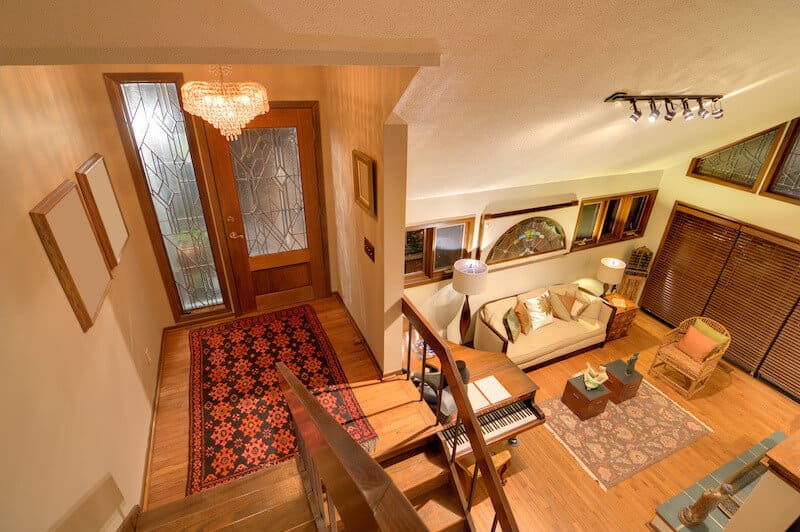Bi-level homes, also known as split-level homes, offer a unique architectural design that combines the benefits of open space and functional living. These homes typically feature staggered floor levels, creating distinct areas for living, dining, and entertainment. Decorating such a home can be both an exciting and challenging task. This article explores modern decorating strategies to make the most of your bi-level home, ensuring a harmonious, stylish, and practical living environment.
Understanding Bi-Level Homes
Before diving into decorating strategies, it’s important to understand the structure of bi-level homes. Typically, these homes have two levels separated by a short flight of stairs. The upper level often contains the main living areas such as the kitchen, dining room, and bedrooms, while the lower level serves as a family room, office space, or guest area. The design allows for efficient use of space and provides a sense of openness while maintaining distinct zones for various activities.
Creating a Cohesive Color Palette
One of the first steps in decorating a bi-level home is to establish a cohesive color palette. Consistency in color helps create a seamless flow between the levels, enhancing the sense of unity and space. Opt for neutral tones as the base—such as whites, grays, and beiges—then introduce accent colors through furniture, artwork, and accessories. Using the same accent colors across both levels ties the spaces together, providing visual continuity.
Maximizing Natural Light
Bi-level homes often have large windows, which allow natural light to flood the space. Maximizing this light is key to creating a warm and inviting atmosphere. Consider using sheer curtains or blinds that can be easily opened to let in light without compromising privacy. Mirrors can also be strategically placed to reflect light and make rooms appear larger and more open.
Emphasizing Vertical Space
The architectural design of bi-level homes offers an opportunity to emphasize vertical space. High ceilings or open staircases can be highlighted with modern light fixtures or hanging plants. Shelving units and tall bookcases can draw the eye upward, adding visual interest and providing functional storage solutions. This approach helps to utilize every inch of space while maintaining a clean, modern look.
Furniture Arrangement and Selection
When selecting furniture for a bi-level home, consider pieces that are both stylish and functional. Choose furniture that complements the architectural style and fits comfortably within the space. For open-plan areas, use rugs and furniture placement to define different zones. Modular furniture can be particularly effective, as it allows for flexibility and can be easily rearranged to accommodate various needs or gatherings.
Living Room
In the living room, opt for a sectional sofa that can comfortably seat multiple people while maintaining an open flow. A coffee table with storage can provide functionality without cluttering the space. Add a few modern armchairs to create a cozy reading nook or conversation area.
Dining Area
For the dining area, choose a table that suits the space and can accommodate guests. A rectangular table works well for narrower areas, while a round table can create a more intimate setting. Consider chairs with sleek designs and comfortable cushions to enhance the dining experience.
Integrating Technology
Modern homes often incorporate smart technology to enhance convenience and efficiency. In a bi-level home, this can include smart lighting systems, climate control, and security features. Integrating technology seamlessly into the design ensures a contemporary feel without sacrificing aesthetics. Consider installing built-in speakers or using wireless devices to maintain a clutter-free environment.
Adding Personal Touches
While modern design often emphasizes minimalism, adding personal touches is essential to make a house feel like home. Displaying artwork, family photos, or collectibles can add character and warmth to the space. Choose pieces that reflect your style and complement the overall design. Incorporating plants or flowers can also bring life and color to the rooms, enhancing the natural ambiance.
Optimizing Storage Solutions
Bi-level homes can benefit from creative storage solutions to maximize space and reduce clutter. Built-in cabinets, under-stair storage, and multifunctional furniture can help keep belongings organized and accessible. Consider using open shelving in the kitchen or living area to display items while keeping the space tidy. Efficient storage ensures that the home remains functional and visually appealing.
Conclusion
Decorating a bi-level home requires a thoughtful approach to balance the architectural design with modern aesthetics. By creating a cohesive color palette, maximizing natural light, and selecting functional furniture, you can transform your bi-level home into a stylish and comfortable space. Emphasizing vertical space, integrating technology, and adding personal touches further enhance the living environment, making it uniquely yours. With these strategies, your bi-level home can become a modern sanctuary that perfectly suits your lifestyle and needs.

